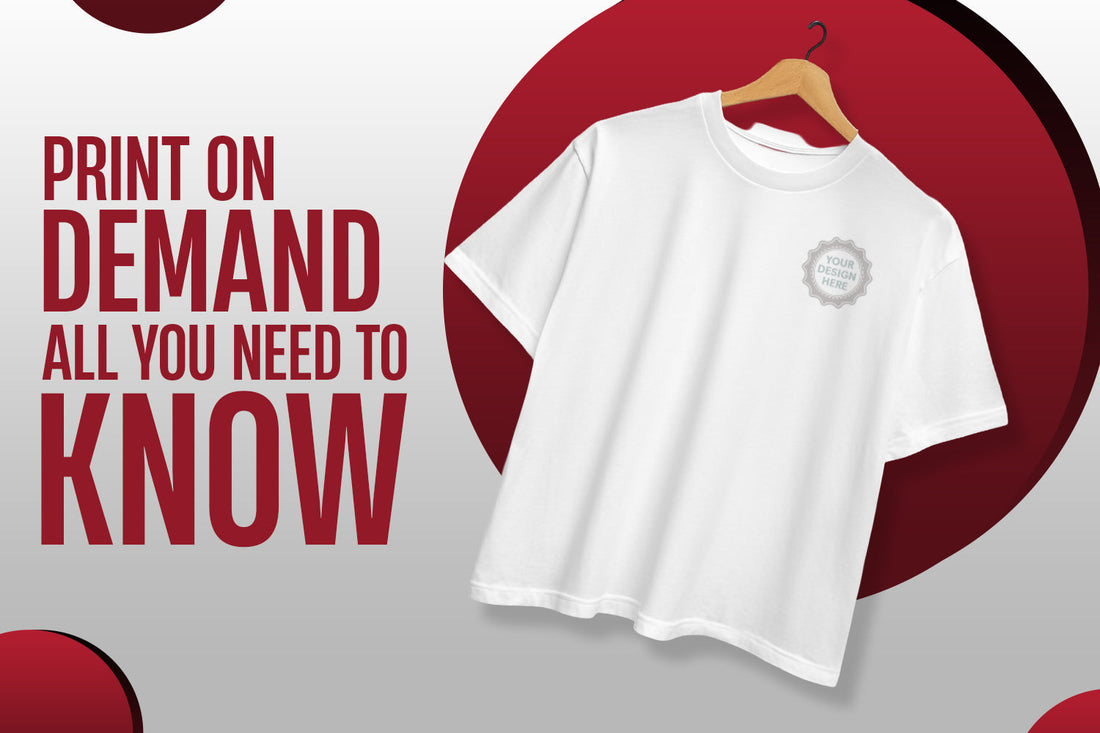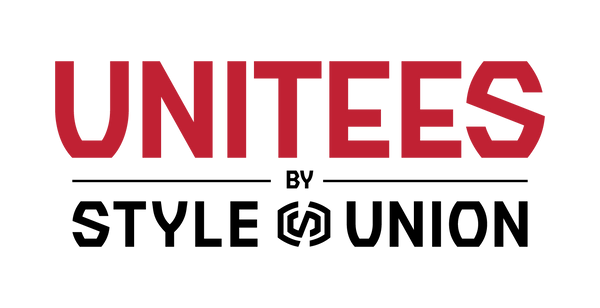
Print on Demand: All You Need to Know
When you become a designer for a brand that people admire through the clothes they wear, the drinks they have, and the walls they have, and this happens without having to store boxes in your apartment, then "printing on demand" is a term you are probably familiar with.
What is Print on Demand (POD)?

Print on demand (POD) is a business method where products are made only after an order is placed. You come up with designs and add them as prints on different items like t-shirts, mugs, or phone cases—but you don't keep any stock. As a result of a purchase made by a customer, a third-party partner prints, packs, and ships the item. It is a completely relaxed way of running a store without the problem of inventory or shipping.
Is Print on Demand Profitable in 2025?
Of course, print on demand is a money-making business in 2025; however, the degree of success is entirely up to you. A POD can be a "low-risk, high-return" business if you zoom into a particular niche, continuously generate new designs, and cleverly set the prices. The main point is a regular promotion using various channels—social media, SEO, and paid ads. Although profit per item is usually less than in the case of traditional bulk production, the freedom and the option to increase the order volume are the factors that make POD an attractive solution. This is not a “get rich fast” system, but if you play it right with the designs and the promo, it can eventually turn into a money-making venture.
How to Start Your POD Store: Step-by-Step Guide
Step 1: Find Your Own Niche
It’s still a long way to the drawing board when you haven’t found the target group/users yet. Will the products you decide to create serve the needs of pet lovers, gym fans, coffee addicts, or people considered to be minimalists? When your target audience becomes very specific, you will have an easier time connecting and making designs that they would really want to buy.
Step 2: Brainstorm & Create Product Ideas
Once you have decided on the right concept or niche, the next step is to pick some cool jargon or quotes or draw up matching designs that fit that group. There’s no need for you to be a professional graphic designer. Simple tools like Canva can also be used, and if you want, you can hire creative freelancers to assist you. In this way, you will have unique and trend-loving products that will not be found in other stores.
Step 3: Decide the Product Range
Start with a few pieces of clothing, for instance, and gradually increase your range of items. Some popular items for printing on demand are:
-
T-shirts
-
Hoodies
-
Tote bags
-
Mugs
-
Phone cases
-
Posters or wall art
Try not to complicate things for yourself by having 50 products on the first day and just plunge into it. Work on quantity with quality.
Step 4: Pick a POD Platform
Connecting your ideas with real products is the next step. You are going to need a platform that prints the product and handles the shipping on your behalf. Most of these platforms are compatible with e-commerce builders. Even if we are not mentioning brands here, knowing what features a platform has is important.
-
High-quality printing
-
International delivery
-
Mockup generator tools
-
Accessible services to the e-commerce market
Step 5: Storefront Installation
Now that you have picked your platform, it is time to set up your store and make customers visit it. Here, they can look through your items, click, and place an order. Depending on what people want to accomplish, they can choose between Shopify, Etsy, and WooCommerce.
Make use of the following to customize your shop:
-
A good-looking store
-
Efficient and precise descriptions of the product
-
High-quality mockup for the product image
-
An About Us and Contact page
Do not neglect branding—your logo, colors, and style all contribute to the shopping experience.
Step 6: Price Your Products Smartly
If your price is too high, then nobody will want to buy your products. If you price it too low, you will not make any money. Then how will that "just right" pricing be determined?
Here are some of the points that you should think about:
-
Basic cost (the amount that the POD will charge for)
-
Freight expenses (sometimes freight is taken care of, sometimes not)
-
Profit goal (usually within the range of 20-50%)
-
Competitor prices
Try starting with average prices and see how well they are received by your target group.
Step 7: Launch & Market Your Store
After setting up everything, the time to do a live test is next on the list! But just having a store is not going to get you anywhere—you deserve to have traffic to your stall.
Initially, one can start with:
-
Posting on Instagram, Pinterest, and Facebook
-
Trying small ad campaigns to test if there is any interest
-
Advertising to friends and sending newsletters to early subscribers
-
Making contact with micro-influencers who are in your field
Marketing is always a process. Treat your launch like a restaurant's soft opening—you keep on tweaking.
Step 8: Handle Orders, Feedback & Scale
Good news: with print on demand, most of the processes that deal with order fulfillment and shipping are automated. But you still have to check the order status, work with customer service, and respond to feedback. As a result, people will feel safe at the beginning of the process, and your brand will show its character.
After you have some momentum, you can start:
-
Introducing new products or product variations
-
Doing seasonal promotions
-
Getting the opinions of the buyers about you to use the feedback for marketing purposes.
Also Read: Types of T-Shirt Necklines: A Complete Guide
What to Avoid When Running a POD Store
1. Jumping In Without a Clear Niche
Trying to sell to everyone rarely works. The more a niche is defined, the better it will be to connect with real buyers.
2. Using Low-Quality Designs
Bad design kills good ideas. It is recommended that it be clean, sharp, and visually pleasing.
3. Ignoring Mockups
Plain product images won't attract buyers. Use lifestyle mockups for this purpose so people can see and feel how they are using your product.
4. Choosing the Wrong Products
Do not blindly add items to your store. Always test samples for quality before offering them in your store.
5. Pricing Without Strategy
Random pricing hurts profits. Not only should pricing be balanced between cost and margins, but it should also be what the audience is expecting.
6. Overloading Your Store
Having too many products confuses the visitors. It is better to start with a small number and concentrate on the successful designs.
7. Skipping Marketing
Just launching a store isn’t enough. You cannot depend on marketing to be only a one-time event and expect the traffic to keep flowing, as you will also require constant marketing in order to keep your traffic and sales.
8. Copying Other Brands
Copying others can put you in legal trouble with copyrights. Be unique and different by just letting your voice and ideas be heard.
9. Ignoring Customer Feedback
Reviews should not be ignored. Fix problems right away and provide convenience for customers to easily give feedback.
Best Practices to Make Your Designs Sell
1. Keep It Simple
Complicated sets are usually overlooked by people. Neat and plain understandable designs will attract the consumer more rapidly.
2. Focus on Trends (But Stay Original)
Do not just copy and paste an idea; instead, use trends and also keep your work unique. Merge trends with your brand voice.
3. Use High-Contrast Colors
High contrasts draw the eye, and the text or art becomes more readable. Also, they give an enhanced look to product previews.
4. Design with the Product in Mind
The picture that fits the bracelet may not work well with the hoodie. Create variations of the same design for different items.
5. Test Multiple Font Styles
Type can be the reason to convey or spoil your idea. Test bold, playful script fonts to find the most fitting one.
6. Think Emotionally
Designs that evoke laughter, nostalgia, or pride tend to attract consumers quickly. People buy not what they need, but what they feel.
7. Include Niche References
Jokes, acronyms, and characters are forms of communication that are closest and most direct to the target group. It is similar to speaking their language.
8. Make Sure It's a Mobile Friendly
Lots of users of the Internet are on their phones. Look from afar and check the impact of your work on small screens.
9. Receive Feedback Before Releasing
Do not guess—seek the opinion of friends, fellow workers, or members of online groups on whether or not your work is effective.
10. Generate Mockups That Narrate the Story
Just don't exhibit the product. Show how it exists in everyday life.
Also Read: 10 T-Shirt Design Ideas That Everyone Will Love
Final Thoughts & Getting Started with Confidence
It is a smart decision to launch a print-on-demand store in 2025—but only if you behave as if it were a genuine business. A huge investment or a warehouse of products is not necessary. Instead, what you really need is an idea that is crystal clear, a stronghold platform, and the patience to experiment. You produce by focusing on good designs, narrating the story of your items through visuals, and being persevering with your work.
On the other hand, if you are looking for a reliable partner to offer high-quality, customizable apparel solutions, Style Union-bound Unitees is the answer. Their dedicated customer support ensures a smooth process from design upload to final product, making it easier for you to buy custom t shirts or order polo shirts with logos, creating professional and stylish apparel for any occasion. Whether you’re branding your business, designing for an event, or just want unique and customized apparel, Unitees by Style Union can help make it happen.
FAQs
What is print on demand?
First, you upload your design to a product, then you promote it online, and finally, when someone makes a purchase, the POD provider prints and delivers the product directly to the buyer’s location.
How to be successful with print-on-demand?
Start by defining a target market, designing unique products, setting prices wisely, and using social and digital media for continuous promotion of your products.
Is on-demand printing profitable?
Of course, it is, if you establish a solid brand, keep your designs of high quality, and use the right marketing strategies to attract visitors to your store.
How to start Print on demand business?
Identify the market, create an online store, link with a POD platform, upload your designs, and start marketing your products to the people.
